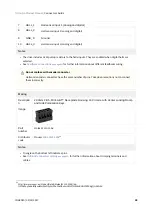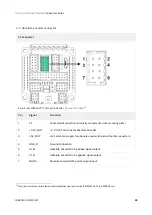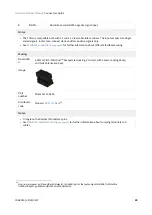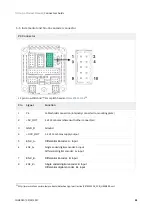
Triton Go Product Manual |
Product Description
INGENIA | 05/29/2017
16
11
http://doc.ingeniamc.com/display/EMCL/-+Drive+temperature
4.3 Hardware revisions
Hardware
revision
Individual board
references
Description and changes
1.0.0
August 2016
i039-01H1-1.0.0
i039-01H2-1.0.0
i039-01H3-1.0.0
First product release.
1.1.0
November 2016
i039-01H1-1.1.0
i039-01H2-1.0.0
i039-01H3-1.1.0
Changed product current range naming (current
resolution and range is exactly the same as before)
•
TRI-0.5/48 becomes TRI-1/48
•
TRI-2/48 becomes TRI-4/48
•
TRI-8/48 becomes TRI-7/48
Improved robustness of CAN / EtherCAT connectors.
Features added:
•
Analog Halls feedback
•
Analog (Sin-Cos) encoder feedback
•
RS-485 communications
4.4 Power and current ratings
TRI-4/48-x-P and
TRI-7/48-x-P variants of Triton go
are capable of providing the nominal current from -25 ºC to
85 ºC (temperature measured in the coldplate) with a 1.2 ºC/W heatsink attached by means of a low thermal
resistance interface material. Above 85 ºC a current derating is required.
TRI-1/48-x-P, on the other hand, does
not require a heatsink attached to reach its nominal current.
In case of excessive power losses over-temperature will be detected, causing the drive to turn off. The system
temperature is available in
and is measured near the power stage.
This temperature
parameter can be accessed from USB 2.0, EtherCAT, CAN or RS485 serial interface and does not indicate the air
temperature, but the temperature of the PCB. Above 110 ºC the Triton Go automatically turns off the power
stage and stay in fault state avoiding any damage to the drive. The Fault LED will be activated and latched until
temperature decreases below this threshold.
Identifying the hardware revision
Hardware revision is screen printed on the board.
















































